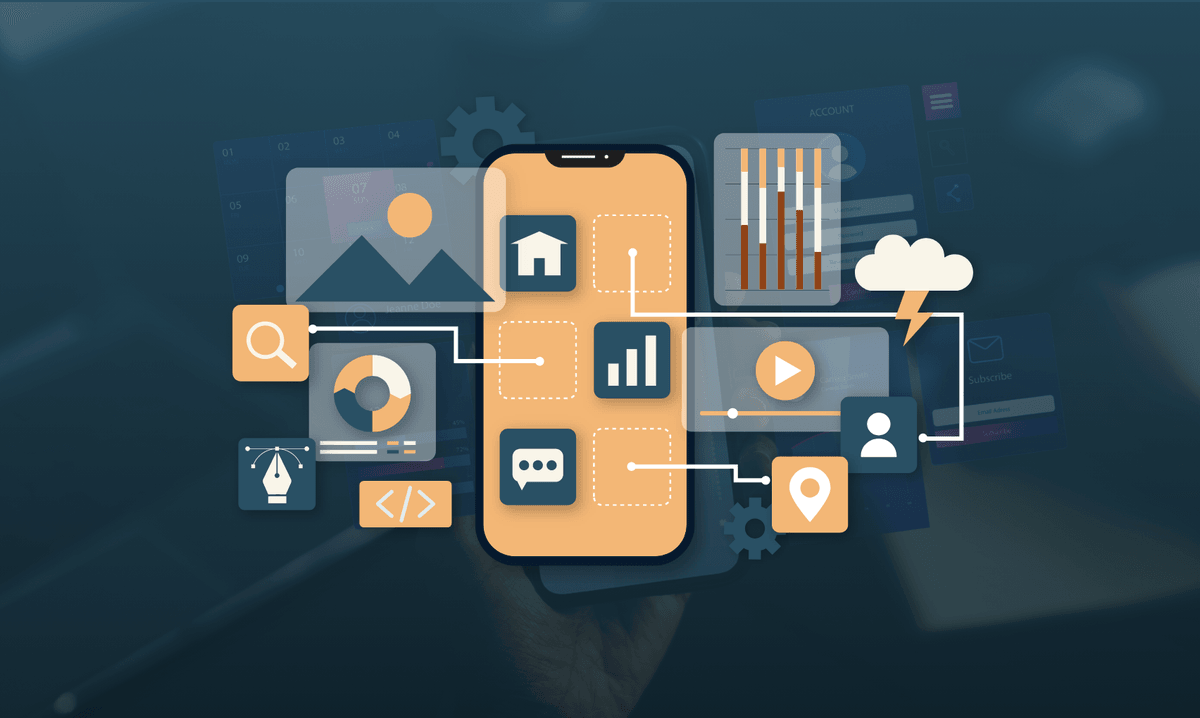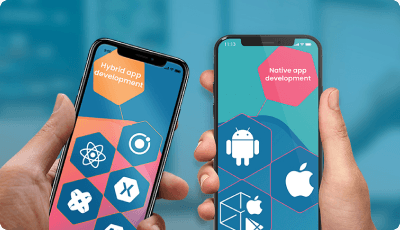Introduction
The Digital revolution has massively influenced consumer preferences, notably shifting them towards mobile-based applications and content. In this evolving landscape, Progressive Web Apps (PWAs) have emerged as game changers, revolutionizing progressive mobile app development and reshaping mobile shopping experiences.
It was evident that countless businesses were struggling during the 2020 pandemic and incurred significant losses, but do you know the pandemic was nothing less than Christmas for Amazon? Wondering how? In this blog, we will walk you through how Amazon’s Christmas came early and will share compelling reasons for choosing PWA.
Let’s get started!
Amazon’s Christmas Came Early!
Amazon’s remarkable sales growth of up to 60% during May and July compared to the same period in the previous year highlights this trend. This surge in online shopping underscores the relevance of progressive web apps in today’s retail sector.
You might think that we are going off-topic, but giants like Amazon have the ability and resources to affect users’ purchasing decisions. Tiny ads between your YouTube videos and ad posts while scrolling through your Facebook and Instagram feed can affect your subconscious more or less and ultimately play a predominant role in your daily decision-making for shopping as well.
This scenario emphasizes the growing importance of progressive shopper apps in influencing consumer behavior.
The Amazon story was not related to what we will talk about, but it is pivotal to understand that people have started using mobile devices like never before. The pandemic has helped this change even more.
The world has over 3 billion smartphone users right now, which is almost 50% of the world’s population, and on average, a person spends around 3 hours daily on their mobile device. Millennials are way ahead of these statistics by spending 5 hours daily on their mobiles, often engaging in mobile shopping through progressive shopper apps.
The use of mobile devices is not limited to calling; it is a medium of the current purchasing cycle. If you don’t want to go out of the market, you’ll have to change your business accordingly, perhaps by embracing PWA eCommerce to stay relevant.
The trend has already begun for mobile-first web apps. Mobile-first means you’ll have to develop your web app to be comfortable and fast when accessed on a mobile device.
So, What Is PWA?
Let’s talk about how PWA comes into this picture by taking the example of Poland’s Kubota shoe company, which has been in the Polish market since 1994. It saw a drastic decrease in sales and revenue when companies like Adidas and Nike entered the Polish market. They had physical and online stores that took Kubota by surprise. But they did a glorious return in the market when they launched their PWA store.
Kubota launched their eCommerce PWA, which resulted in a 192% growth in daily visitors and a 26% growth in average monthly visits. [Source – PWA Stats]
This example brilliantly illustrates the power of PWA eCommerce in leveling the playing field for local retailers against global giants.
PWA is nothing but a package of things that make a web app better in terms of rich user experience by providing features installable like a native mobile application, loading time of less than 3 seconds, push notifications, and offline biometric support.
The new PWAs are also incorporated with AR/VR technologies to enhance the purchasing experience, making them an imperative element in the future of progressive mobile app development.

Notable Examples of PWAs
In this section, we will walk you through prominent and successful examples of PWAs.
OnePlus has launched a home demo for a TV using AR, showcasing how these new-age technologies, when combined with progressive web apps, can yield extraordinary results.
Imagine being a furniture seller and demonstrating your products in a customer’s space, without physically being there, through a progressive mobile app.
These features, previously exclusive to native mobile applications, are now achievable with Progressive Web Apps (PWAs). PWAs are built at a lower cost than traditional mobile applications and offer similar features.
Importantly, they are not restricted to any device or platform, meaning your PWA can function seamlessly on Android, iOS, Windows devices, and even desktop computers.
eCommerce websites often struggle with high bounce rates and low conversion rates, frequently losing customers during lengthy checkout processes. However, by utilizing a progressive shopper app in the form of PWA, many companies have witnessed remarkable improvements.
By overcoming this situation with the help of PWA, many companies have achieved outstanding results. Let’s check those out:
- OLX saw a 250% hike in its engagement rate and a 146% hike in its click-through rate on ads with push notifications. With PWA’s help, they witnessed 23% faster interaction, resulting in 80% fewer bounce rates. [Source – PWA Stats]
- MakeMyTrip’s progressive mobile app saw a 160% rise in shopper sessions and a threefold increase in conversion rates, outperforming their native app. [Source – PWA Stats]
- BookMyShow saw a drastic increase in its revenue and an 80% increase in its conversion rate after shifting to PWA. According to the team, the PWA takes less than 3 seconds to load completely. [Source – PWA Stats]
- UK clothing brand George witnessed a 31% increase in conversion, a 2× lower bounce rate, and a 20% increase in page views after upgrading to a PWA. [Source – Google Developers – Case Studies]
- AliExpress saw an improvement in their conversion rate for new users by 104% across all browsers, with 2× more pages visited and 74% more time spent per session. [Source – PWA Stats]
- Flipkart’s users spent 3× as much time on-site with 40% higher re-engagement and 3× lower data usage via their Progressive Web App. [Source – PWA Stats]
- Flipkart’s PWA is also responsible for 50% of its new customer acquisition, demonstrating the power of a progressive shopper app. [Source – PWA Stats]
- The Starbucks PWA has increased daily active users by 2×. Orders on the desktop are at nearly the same rate as on mobile. [Source – PWA Stats]
Why Should You Choose PWA?
- Choosing Progressive Web Apps (PWAs) over native mobile applications offers several advantages, especially in the realm of mobile shopping. A key factor is the cost savings with PWAs.
- For example, in iOS applications, selling digital goods requires you to pay a 30% commission on sales revenue to Apple. This additional cost can increase your product prices, potentially driving away customers.
- Opting for PWAs, where such charges are not applicable, can be a more economical choice, particularly for progressive shopper apps.
- Moreover, PWAs are easily maintained compared to native apps. For instance, if you want to make minor changes to your UI, native applications require a complete deployment process.
- In contrast, PWAs function like any other web app, allowing for straightforward and quick updates, which is a significant advantage for businesses focusing on progressive mobile app development.
- Maintaining native apps also involves additional costs. For instance, the Google Play Store charges a one-time fee, but the Apple App Store requires a yearly maintenance fee of 99 USD.
- Furthermore, your app must adhere to the guidelines of these stores, or it risks being removed or blocked. Considering the high volume of apps released annually, standing out in app stores is challenging.
This competitive landscape is particularly evident in PWA eCommerce, where differentiation is key. However, PWAs, as web applications, benefit from SEO, which can significantly enhance their visibility.
By optimizing your PWA for search engines and creating an interactive user experience, you can build a consistent and loyal user base. This strategy is particularly effective for progressive shopper apps, where user engagement directly translates into business success.
Conclusion
Ultimately, the decision to choose between a native app and a PWA depends on your business goals and customer base. If you have an established, large customer base, native apps might be a viable option, albeit with higher costs.
However, if you’re aiming to expand your business to mobile users without alienating desktop customers, PWAs are an excellent choice. They represent a cost-effective, next-generation solution, particularly suitable for the progressive shopper market.
For those seeking assistance in PWA development and looking for a technology-forward approach, ZealousWeb is here to help. Our expertise in developing progressive mobile apps tailored to your business needs makes us the ideal partner.
Contact us today at hello@zealousweb.com to discuss your PWA development requirements, and let us craft the perfect solution to enhance your mobile shopping experience.







